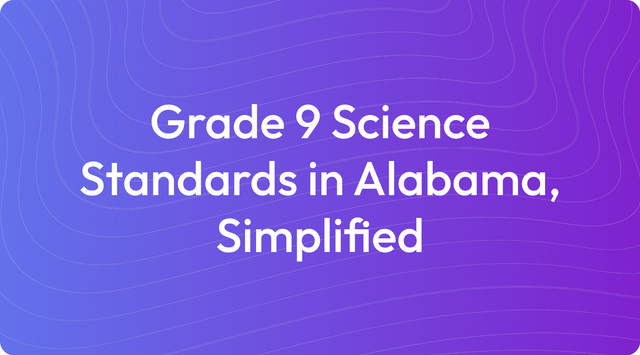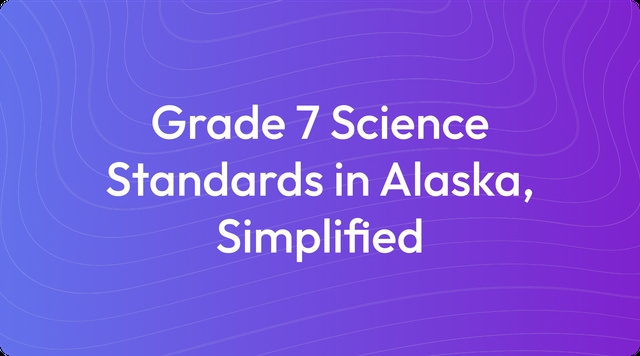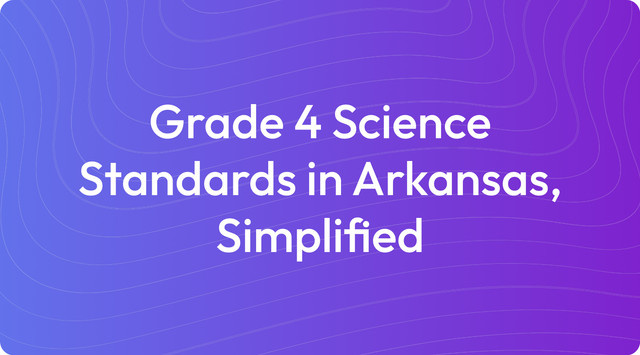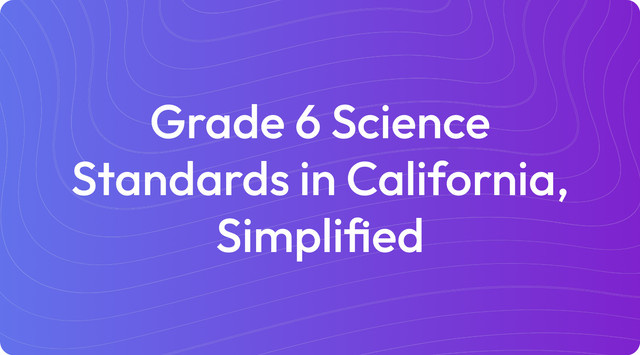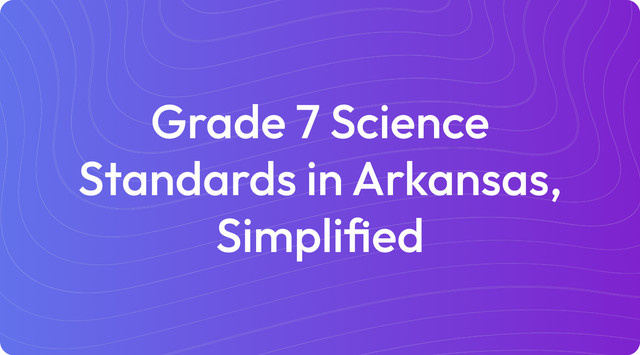Grade 11 Science Standards in Alaska, Simplified
Grade 11 science in Alaska offers chemistry, physics, Earth science, and advanced topics. Get clear standards—read more on TeachShare!
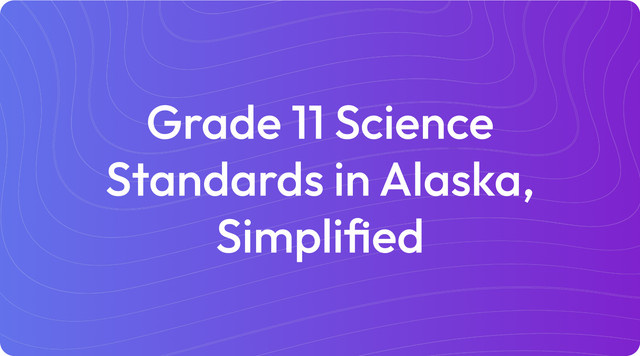
We understand that working with education standards can be a detailed process. They form the backbone of curriculum planning and help set clear learning targets for students. Our goal is to provide resources that make it easier for you to connect with these standards and apply them in your classroom.
Education standards are learning goals that outline what students are expected to know and do at each grade level. They provide clear benchmarks for student progress but do not dictate specific teaching methods, offering you flexibility in how you design your lessons. For instance, Alaska's 11th-grade science standards set performance expectations for topics like Physical Science and Life Science, suggesting activities such as investigating chemical reactions or studying genetic variation, while leaving the instructional approach to the educator.
What Are Grade 11 Science Standards in Alaska?
The Grade 11 Science Standards for Alaska, adapted from the Next Generation Science Standards (NGSS), integrate advanced concepts across four key disciplines. These standards are designed to foster hands-on learning and real-world problem-solving, connecting topics to both global challenges and Alaska's unique environment. Here is an outline of the core standards and learning goals:
Physical Science (PS): Matter, Energy, and Forces
- HS-PS1-5: Apply scientific principles and evidence to provide an explanation about the effects of changing temperature or concentration on chemical reactions.
- HS-PS3-4: Plan and conduct an investigation to provide evidence that energy is conserved in a system.
- HS-PS4-3: Evaluate the validity of claims that electromagnetic radiation has both beneficial and harmful effects.
Life Science (LS): Genetics, Evolution, and Ecology
- HS-LS1-4: Use a model to illustrate how the processes of photosynthesis and cellular respiration cycle matter and energy in living systems.
- HS-LS3-3: Apply concepts of probability to explain the variation and distribution of expressed traits in a population.
- HS-LS4-6: Create or revise a simulation to test solutions that mitigate adverse impacts of human activity on biodiversity.
Earth and Space Science (ESS): Climate, Natural Resources, and Space Systems
- HS-ESS2-5: Plan and conduct an investigation of the properties of water and its effects on Earth’s materials and surface processes.
- HS-ESS3-1: Construct explanations for how natural resources, human activities, and climate change interact to affect Earth’s systems.
- HS-ESS1-3: Communicate scientific ideas about the way stars, over their life cycle, produce elements.
Engineering Design (ETS): Problem-Solving
- HS-ETS1-3: Evaluate solutions to a real-world problem based on prioritized criteria and trade-offs that account for cost, safety, reliability, and environmental impact.
- HS-ETS1-4: Use computer simulations to model the impact of proposed solutions to complex real-world problems.
Key Learning Goals for Grade 11 Science in Alaska
- Physical Science: Students explore chemical reactions, energy conservation, and electromagnetic radiation, focusing on real-world applications.
- Life Science: Students investigate energy flow in ecosystems, genetic variation, and biodiversity conservation strategies.
- Earth Science: Students study how Earth’s systems are shaped by water, climate change, and human activity, with Alaska-specific examples.
- Engineering Design: Students design, test, and refine solutions to environmental and societal challenges, such as renewable energy or habitat conservation.
- Connection to Alaska: Students study local topics like glacier dynamics, Arctic ecosystems, resource extraction, and renewable energy in rural areas.
The framework for these standards is guided by the Science Standards for Alaska, which are adapted from the Next Generation Science Standards.
Key Tested Standards
While Alaska administers statewide science assessments in grades 5, 8, and 10, there is no state-level exam for Grade 11. Instead, assessment of these high school standards is handled at the local level, giving you the flexibility to evaluate student progress in ways that best fit your curriculum. The key standards for Grade 11 generally focus on the following core units:
- Physical Science (PS): Matter, Energy, and Waves - Exploring the principles of chemical reactions, energy conservation, and the properties of electromagnetic waves
- Life Science (LS): Genetics, Evolution, and Biodiversity - Focusing on how energy cycles through ecosystems, the patterns of genetic inheritance, and strategies to protect biodiversity
- Earth and Space Science (ESS): Earth’s Systems and Human Impact - Investigating the processes that shape our planet, the life cycle of stars, and the effects of human activity on Earth's systems
- Engineering Design (ETS): Problem-Solving - Applying scientific knowledge to design, test, and evaluate solutions for real-world challenges
The information and standards outlined here are guided by resources from the Alaska Department of Education & Early Development and the framework of the Next Generation Science Standards.
Example Learning Objectives for Unit Planning
Learning objectives are clear, specific statements that define what you want students to know or be able to do by the end of a lesson or unit. They act as a roadmap for your instruction and provide a clear way to measure student understanding. To help with your unit planning, here are some example learning objectives based on the Grade 11 standards:
Physical Science
- Explain how changing temperature or concentration affects chemical reaction rates using experimental data
- Investigate how energy is transferred and conserved in systems like pendulums or electrical circuits
- Evaluate the risks and benefits of electromagnetic radiation, such as UV light or X-rays
Life Science
- Model how energy flows and matter cycles through ecosystems using processes like photosynthesis and cellular respiration
- Use probability to describe how genetic variation occurs in populations, such as in Arctic foxes or polar bears
- Propose solutions to reduce human impacts on biodiversity, such as protecting Alaskan marine ecosystems
Earth and Space Science
- Describe how water shapes Earth’s surface through erosion and deposition, using Alaska’s glaciers as an example
- Analyze data to explain how human activities, like oil drilling, impact Earth’s resources and ecosystems
- Model the process of nuclear fusion in stars and explain how it creates elements like carbon and iron
Engineering Design
- Design and test a solution, like a renewable energy system, to reduce human impact in Alaska
- Evaluate solutions to environmental problems, considering factors like cost, safety, and effectiveness
- Use computer simulations to test the impact of proposed solutions to climate-related challenges, such as permafrost melting
Key Changes & Updates
The latest updates to the science standards place a stronger emphasis on connecting classroom learning to real-world issues. There is a significant focus on Alaska-specific topics, encouraging you to ground lessons in local contexts like glacial erosion, Arctic ecosystems, and sustainable resource management. This shift also brings climate change and biodiversity to the forefront, asking students to analyze human impacts and develop conservation strategies for habitats affected by warming temperatures.
To support this practical approach, the standards encourage greater use of technology, such as using simulations to model the effects of permafrost melting. The updates also promote cross-disciplinary integration, creating opportunities for students to apply math and literacy skills. For example, students will use mathematical models to analyze data on genetic variation and write evidence-based arguments about conservation.
Create with TeachShare
We understand that aligning lessons with these updated standards, especially with the focus on Alaska-specific topics and technology, takes significant time and effort. Our platform is designed to support you by making it simple to generate activities, assessments, and lesson plans that meet these requirements. Start creating standards-aligned instructional resources with TeachShare now.
Frequently Asked Questions
We understand that adopting new standards can bring up questions. To help you feel confident in your planning, we've gathered answers to some common inquiries about Alaska's Grade 11 Science Standards.
How is Engineering Design integrated into the Grade 11 science curriculum?
Engineering Design is woven into the curriculum to help students apply scientific principles to practical challenges. It focuses on developing and evaluating solutions to real-world problems by considering criteria like cost, safety, and environmental effects. For example, students might be asked to design a renewable energy system for a rural Alaskan community and use computer simulations to model its potential impact.
Do these science standards also support skills in other subjects?
Yes, they do. The standards are designed to be cross-disciplinary, reinforcing skills from other core subjects. Students are expected to use mathematical thinking to analyze data, such as when studying genetic variation or energy transfer. They also build literacy skills by constructing written, evidence-based arguments about topics like climate change and conservation.
What are some specific examples of how the standards are made relevant to students in Alaska?
The curriculum is grounded in local contexts to make learning more meaningful for students in Alaska. Here are a few examples of Alaska-specific topics you'll find:
- Studying how glaciers carve landscapes and deposit sediment
- Modeling energy flow in Arctic food webs, including species like caribou and polar bears
- Analyzing the environmental effects of resource extraction, such as oil drilling
- Designing conservation strategies to address challenges like permafrost melting and protecting local biodiversity
What role does technology play in the updated Grade 11 science standards?
Technology is a key component, with an emphasis on using digital tools for analysis and problem-solving. The standards encourage the use of computer simulations and models to help students understand complex systems and test potential solutions. For instance, a class might use a simulation to predict the effects of melting permafrost on local infrastructure or to model how adopting renewable energy could reduce carbon emissions.
What do successful learning outcomes look like for these standards?
Success is measured by a student's ability to apply their knowledge. A successful student can move beyond memorization to actively use scientific concepts. For example, they should be able to:
- Use experimental data to explain how factors like temperature affect chemical reactions
- Create models that illustrate processes like photosynthesis or the cycling of matter in an ecosystem
- Apply probability to explain the distribution of genetic traits in a population
- Evaluate a proposed solution to an environmental problem based on clear criteria like safety and effectiveness
Answer


